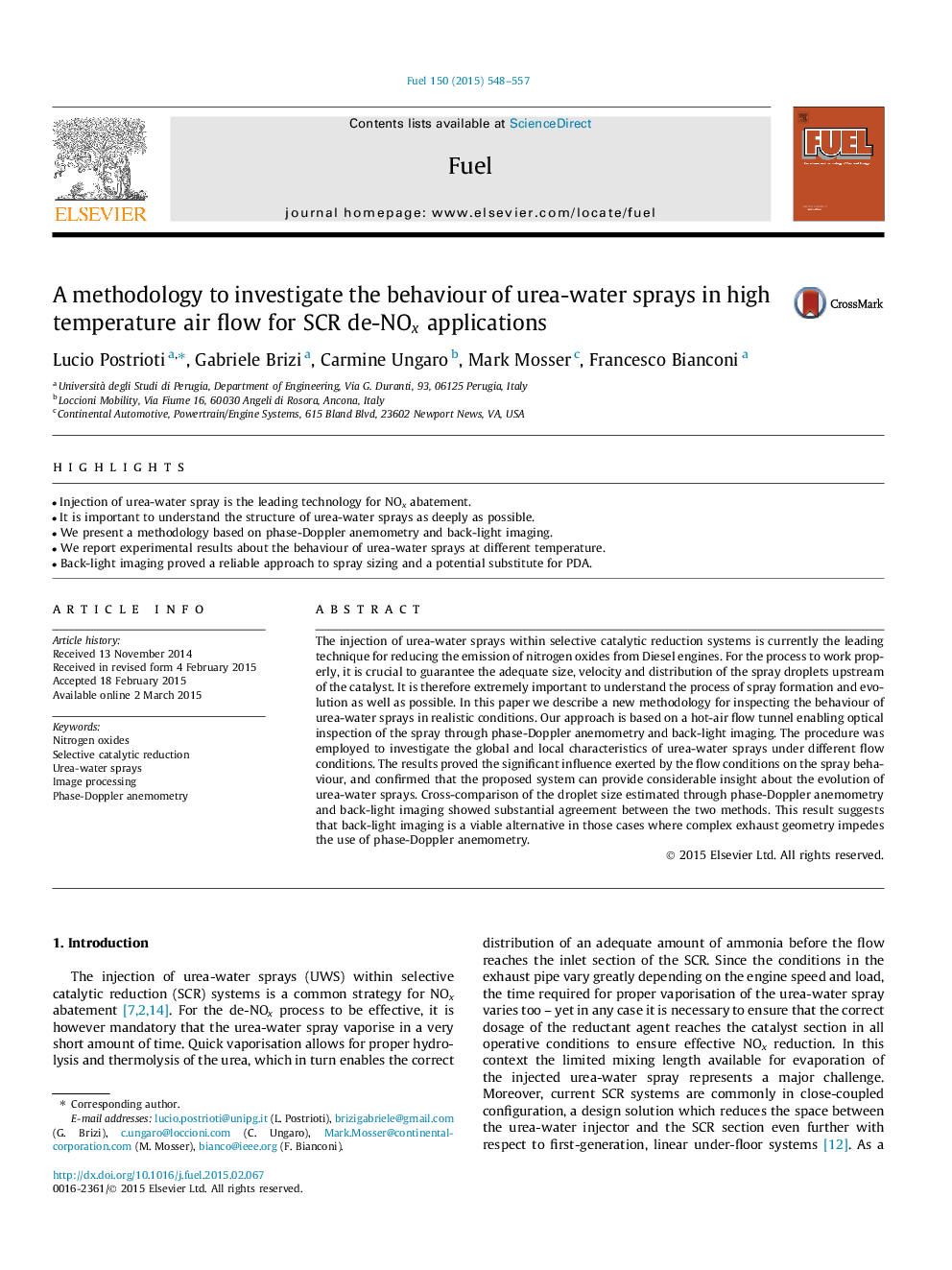| کد مقاله | کد نشریه | سال انتشار | مقاله انگلیسی | نسخه تمام متن |
|---|---|---|---|---|
| 205741 | 461123 | 2015 | 10 صفحه PDF | دانلود رایگان |

• Injection of urea-water spray is the leading technology for NOx abatement.
• It is important to understand the structure of urea-water sprays as deeply as possible.
• We present a methodology based on phase-Doppler anemometry and back-light imaging.
• We report experimental results about the behaviour of urea-water sprays at different temperature.
• Back-light imaging proved a reliable approach to spray sizing and a potential substitute for PDA.
The injection of urea-water sprays within selective catalytic reduction systems is currently the leading technique for reducing the emission of nitrogen oxides from Diesel engines. For the process to work properly, it is crucial to guarantee the adequate size, velocity and distribution of the spray droplets upstream of the catalyst. It is therefore extremely important to understand the process of spray formation and evolution as well as possible. In this paper we describe a new methodology for inspecting the behaviour of urea-water sprays in realistic conditions. Our approach is based on a hot-air flow tunnel enabling optical inspection of the spray through phase-Doppler anemometry and back-light imaging. The procedure was employed to investigate the global and local characteristics of urea-water sprays under different flow conditions. The results proved the significant influence exerted by the flow conditions on the spray behaviour, and confirmed that the proposed system can provide considerable insight about the evolution of urea-water sprays. Cross-comparison of the droplet size estimated through phase-Doppler anemometry and back-light imaging showed substantial agreement between the two methods. This result suggests that back-light imaging is a viable alternative in those cases where complex exhaust geometry impedes the use of phase-Doppler anemometry.
Journal: Fuel - Volume 150, 15 June 2015, Pages 548–557